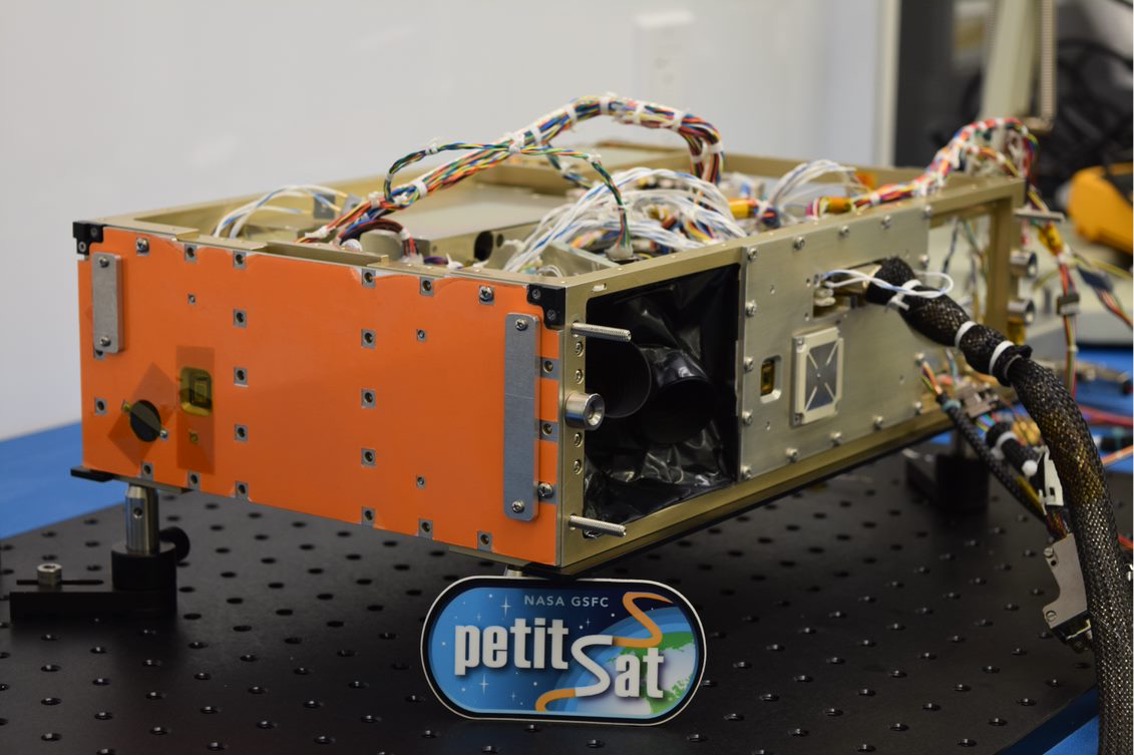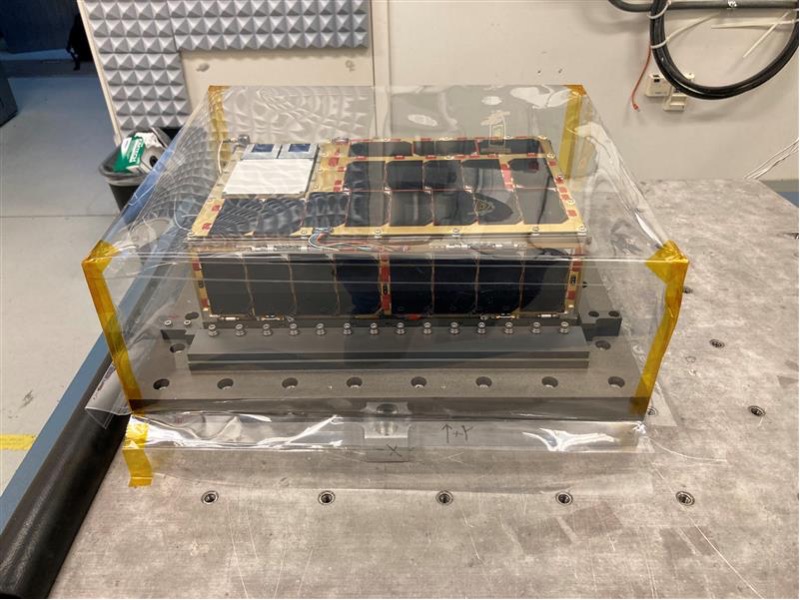Small Spacecraft Activities Around the Agency Archive
Highlights for November 2021
NASA’s Goddard Space Flight Center / Wallops Flight Facility
NASA Goddard Space Flight Center (GSFC) is nearing the completion of two Heliophysics missions in its current “fleet” of five 6-unit (U) CubeSats. The architecture of these CubeSat’s is based on the Dellingr mission with key component upgrades such as improved communications resulting from the Vulcan Wireless Inc. S-band radio.
The petitSat mission will study the link between Medium-Scale Traveling Ionosphere Disturbances (MSTIDS), also referred to as electrobouyancy waves, and plasma enhancements. These interactions can interfere with radio waves used for communication and navigation. The petitSat spacecraft is in the final integration stages and will soon embark on its environmental test program. The project team is on track to deliver the petitSat spacecraft in February to Nanoracks, LLC for launch on a SpaceX Falcon 9 in May 2022.
The GTOSat mission’s primary goal is to advance the quantitative understanding of acceleration and loss of relativistic electrons in the Earth’s outer radiation belts. GTOSat is currently completing its environmental test program (seen above undergoing vibration testing). The spacecraft is planned for launch in 2023.
NASA’s Kennedy Space Center / CubeSat Launch Initiative
Since the last quarterly update, NASA’s Launch Services Program has facilitated the launch of five additional CubeSat Launch Initiative (CSLI) selected CubeSats on two different missions: Educational Launch of Nanosatellites (ELaNa 37) aboard SpaceX’s 23rd Commercial Resupply Services (CRS) mission, and ELaNa 34 as a secondary payload to Landsat 9. To date, 130 CSLI CubeSats have launched and another 46 are slated to fly on 11 different ELaNa missions within the next 12 months. The 13th annual CSLI proposal selection process is currently underway with proposals due in November 2021 and selections expected in early 2022.
Additionally,the Kennedy Space Center’s latest CSLI selected CubeSat, the Passive Thermal Coating Observatory Operating in Low Earth Orbit (PATCOOL) CubeSat, has been completed and turned over for launch on the upcoming ELaNa 38 / CRS SpX-24 mission to the International Space Station in late December 2021.
Read more about CSLI at the following links:
NASA’s Ames Research Center
The BioSentinel project reached a major milestone with the integration of the spacecraft on the Artemis-1 launch vehicle. BioSentinel was the final of ten secondary payloads to be installed on the Orion Stage Adapter in preparations for launch in early 2022. The primary objective of BioSentinel is to detect and measure the impact of space radiation on living organisms over long durations in deep space.
This past summer, the Technology Educational Satellite (TechEdSat) team at NASA’s Ames Research Center was awarded ‘Mission of the Year’ by the AIAA Small Satellite Conference for their work on TechEdSat-10. The mission demonstrated increased storage and power capabilities that could enable future science and exploration using small spacecraft beyond low-Earth orbit. Included on TechEdSat-10 are improvements over previous CubeSat technologies in the areas of communications and radio systems, and new propulsion techniques.
More recently, TechEdSat-13 was successfully delivered for launch on an upcoming flight in December 2021. This mission will be the first to perform in-orbit testing of an artificial intelligence/machine learning (AI/ML) module based on new, energy-efficient neuromorphic processors.
NASA’s Jet Propulsion Laboratory
A number of small spacecraft projects recently completed milestones.
- The Lunar Flashlight project completed its pre-ship review of the payload and avionics subsystems. System integration and testing is underway at the Georgia Institute of Technology in Atlanta.
- The Sun Radio Interferometer Space Experiment (SunRISE) project team has constructed engineering models of various subsystems for use in environmental testing.
- The NEAScout spacecraft, a NASA Jet Propulsion Laboratory and NASA Marshall Space Flight Center-developed CubeSat, was integrated with its dispenser and installed in the Orion Stage Adapter at NASA’s Kennedy Space Center in Florida in preparation for launch on the Artemis-1 mission.
- NASA’s Jet Propulsion Laboratory became one of a number of partners with the Carbon Mapper organization to study methane emission effects on climate change by deploying emerging remote sensing technologies that are needed to effectively pinpoint, quantify, and diagnose sources of high-emission methane and carbon dioxide globally. In addition to JPL, other Carbon Mapper partners are the State of California, Planet, the University of Arizona, Arizona State University, High Tide Foundation, and RMI.
NASA’s Glenn Research Center
Focused on Earth science, the Satellite Hosting Atmospheric and Littoral Ocean Water Sensors (SHALLOWS) project within the Space Science Project Office at NASA’s Glenn Research Center, is working with partners to build and test an imager. The imager was previously flown on suborbital, harmful algal bloom (HAB) missions to assess harmful algal blooms in Lake Erie and inland waters.

































